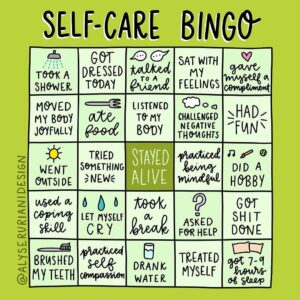Coworking and Your Mental Health
It is no secret that the coworking industry is flourishing. People are flocking to spaces that offer flexible work hours, a community aspect and in-house perks in droves. What is the secret of coworking? How can this industry be doing so well?
Mental health is a taboo subject in our society. We are taught from an early age to bottle our feelings up, leaving them unaddressed and us unfulfilled. Maybe it stems from being in a society where we are taught to conceal our feelings and push them aside. We have lost touch with expressing our emotions that they can cause us detriment down the road. There is a stigma surrounding mental health. The World Health Organization reports approximately 450 million people worldwide have a mental illness. Coworking, while not a sure-fire way to address and tackle mental health, is a step in the right direction.
The coworking industry, through GCUC, strives to do more in this fight against the stigma of mental health. They have created the #CheckYoMate initiative, which is a movement that inspires you to check up on those around you: in your coworking spaces and your life in general. It is all about “dismantling loneliness and destigmatizing mental illness in the coworking community.” While it is important to check up on your coworkers, make sure you are doing the same for your friends, family members, neighbors, and whoever else you come in contact with.
One of the best things about working in a coworking space is the community, there is no doubt. According to Global Coworking Unconference Conference, “Coworking is creating communities of happier, healthier, more productive, more connected professionals.” These communities are improving the lives and the mental health of every single person that walks through the door.
A major component of working in a coworking space is the ability to make your own hours. Maybe you just cannot take working in a cubicle 40 hours a week and it is affecting your mental health. Sitting in such a small space makes you feel small. Your surroundings affect your mental health more than you realize. A coworking space is an alternative that promotes flexibility and freedom. Coworking can alleviate stress in a number of other ways. A space takes care of all the logistics of running an office for you: changing light bulbs, heating and air-conditioning, keeping the refrigerator stocked with snacks, and a myriad of others. All you have to do is sit down and get to work.
Coworking was introduced as an alternative to working from home. When working from home, you might feel isolated, trapped, and you may slip into bouts of unproductivity as you slump down on the couch with your bowl of popcorn in the middle of the day. Aside from fueling procrastination, large periods of isolation at home just isn’t healthy for us. Humans crave interaction, simple as that. The alternative in a coworking space is the community. Working with others in a space that is not your home helps you separate your work life from your personal life, giving you some peace of mind. You are surrounded by people every single day. There are members all across the space doing their own thing, but you know they are there. You know you are not alone.
It is unfortunate to think about, but millions of people suffer from some sort of mental health issue every single day. You do not know what is going on in someone’s life. That is what makes the coworking industry so unique. It provides ways for people to connect on an individual level, creating bonds and helping each other become successful in what they do.
Here are some mental health resources if you are seeking help:















